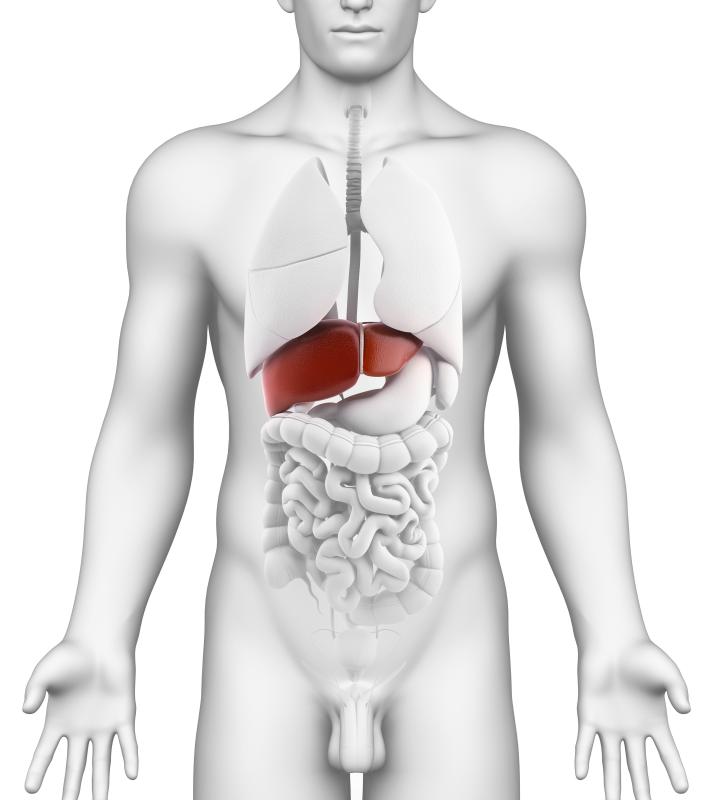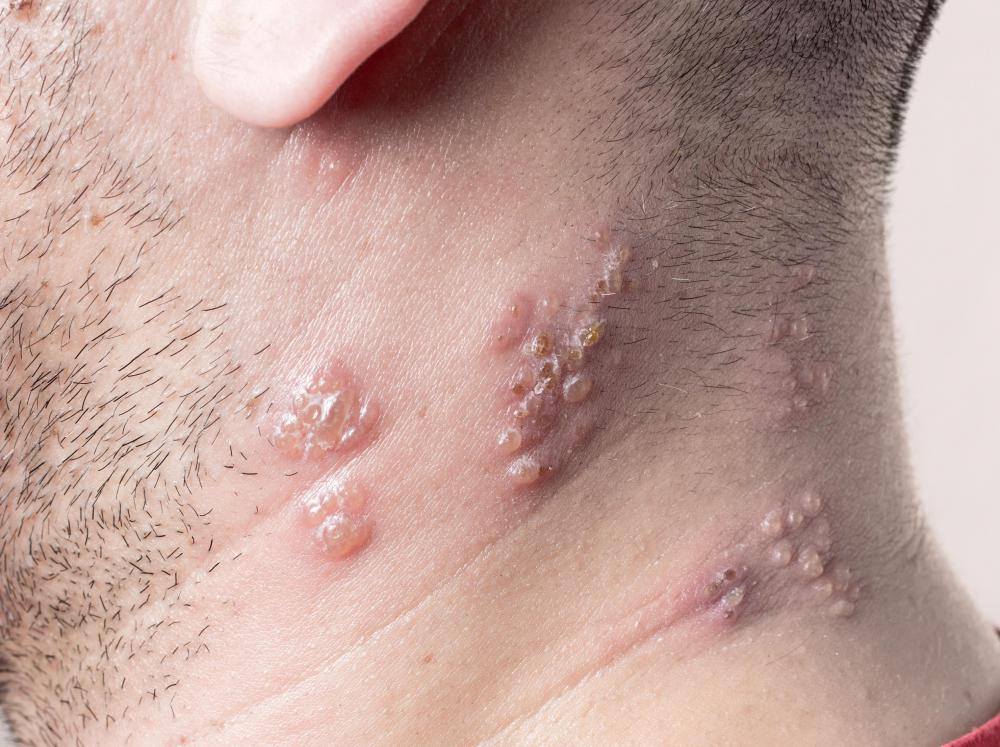At WiseGEEK, we're committed to delivering accurate, trustworthy information. Our expert-authored content is rigorously fact-checked and sourced from credible authorities. Discover how we uphold the highest standards in providing you with reliable knowledge.
What are Hot Lesions?
Hot lesions are open injuries to the skin or another organ that causes the area to become red, inflamed or infected. The inflammation causes the affected tissue to become hot if palpable. These lesions usually are cutaneous, which means that they are located on the skin, and usually have been scratched or rubbed, causing more inflammation and pain. Many hot lesions will have a thin, clear fluid discharge because of the inflammatory response of the immune system, or the lesion might develop a thick, discolored discharge from bacteria growing in the wound. Some types of lesions develop from cutaneous acquired immune deficiency syndrome (AIDS) lesions, liver lesions and hyperintense brain lesions that develop from multiple sclerosis (MS).
Cutaneous AIDS lesions are typically prone to infection because of the reduced function of the person’s immune system. The infection can cause the area to become inflamed, causing the surface of the lesion to break open. Generally, lesions found on the skin of AIDS patients will take longer to heal, giving the lesion more time to develop a life-threatening infection. The physician involved will need to account for a longer recovery period before determining which removal process to use.

A small cutaneous hot lesion might be able to be removed in the doctor’s office. Smaller lesions might not require any stitches or sutures to close the wound after removal. Large lesions or ones that involve a lot of blood vessels might need to be removed by a surgeon. Recovery time is usually minimal, with the patient able to resume his or her normal activities within two days.

Liver lesions that might become hot are usually more serious in nature. This type of lesion is called an adenoma and is one of the larger lesions detected on the liver. As the lesion increases in size, the surface can break open and cause bleeding and internalized pain. The lesion will need to be removed through laparoscopic surgery. This type of surgery is performed by making two to three small incisions and inserting a surgical tool with a minute pincer on the end that enables the surgeon to remove the hot lesion without creating a large abdominal wound.

Hyperintense brain lesions found in MS patients might become hot lesions. The number of lesions detected on the brain can indicate the level of disability and pain that the patient will experience. When the hyperintense lesions become inflamed and open, the lesion becomes a hot lesion. The lesions located on the brain usually are not removed, because of the risks involved in brain surgery.
AS FEATURED ON:
AS FEATURED ON:
















Discuss this Article
Post your comments